Charles E W Bean, Diaries, AWM38 3DRL 606/253/1 - 1918 - 1939 - Part 13

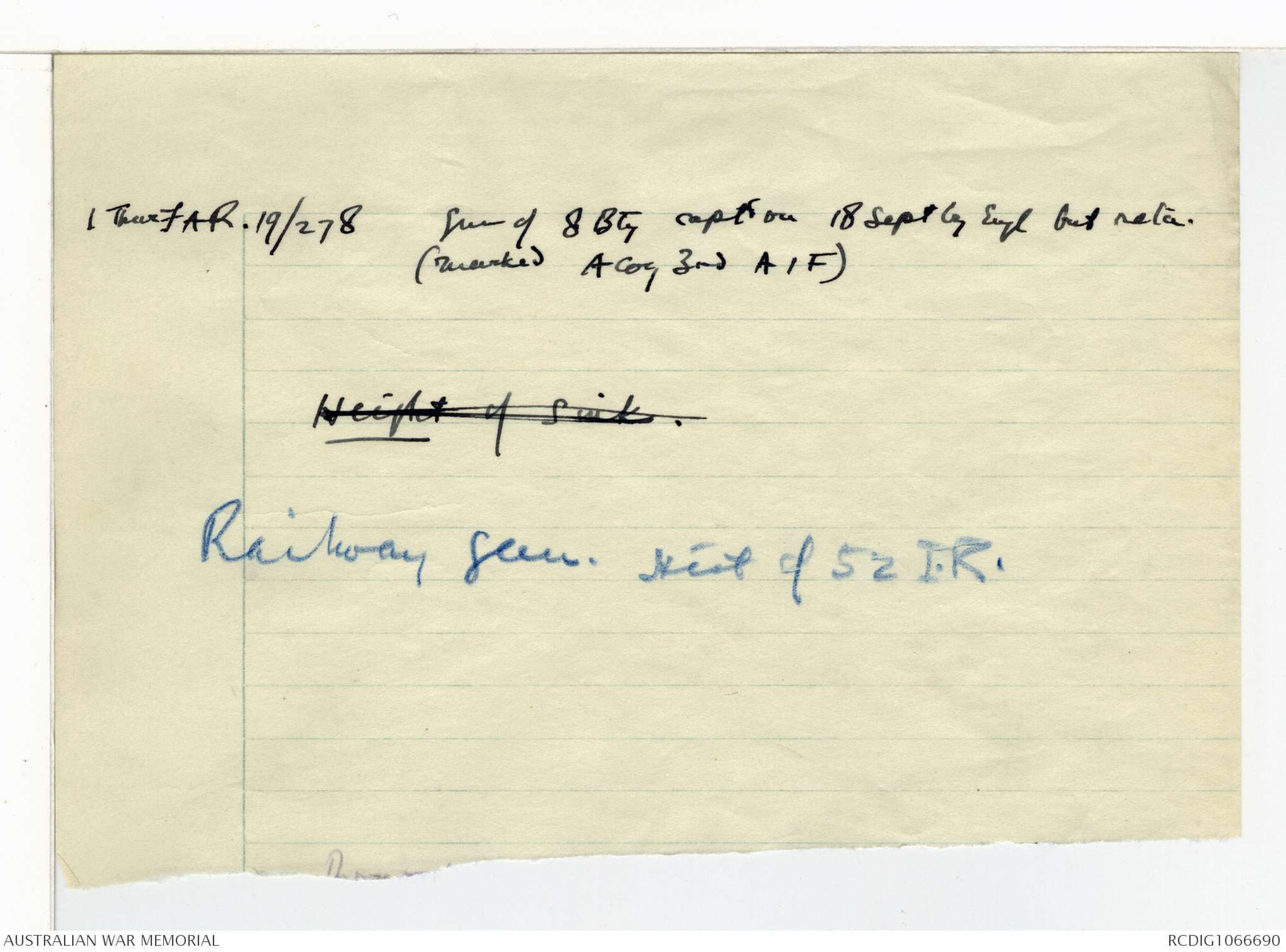
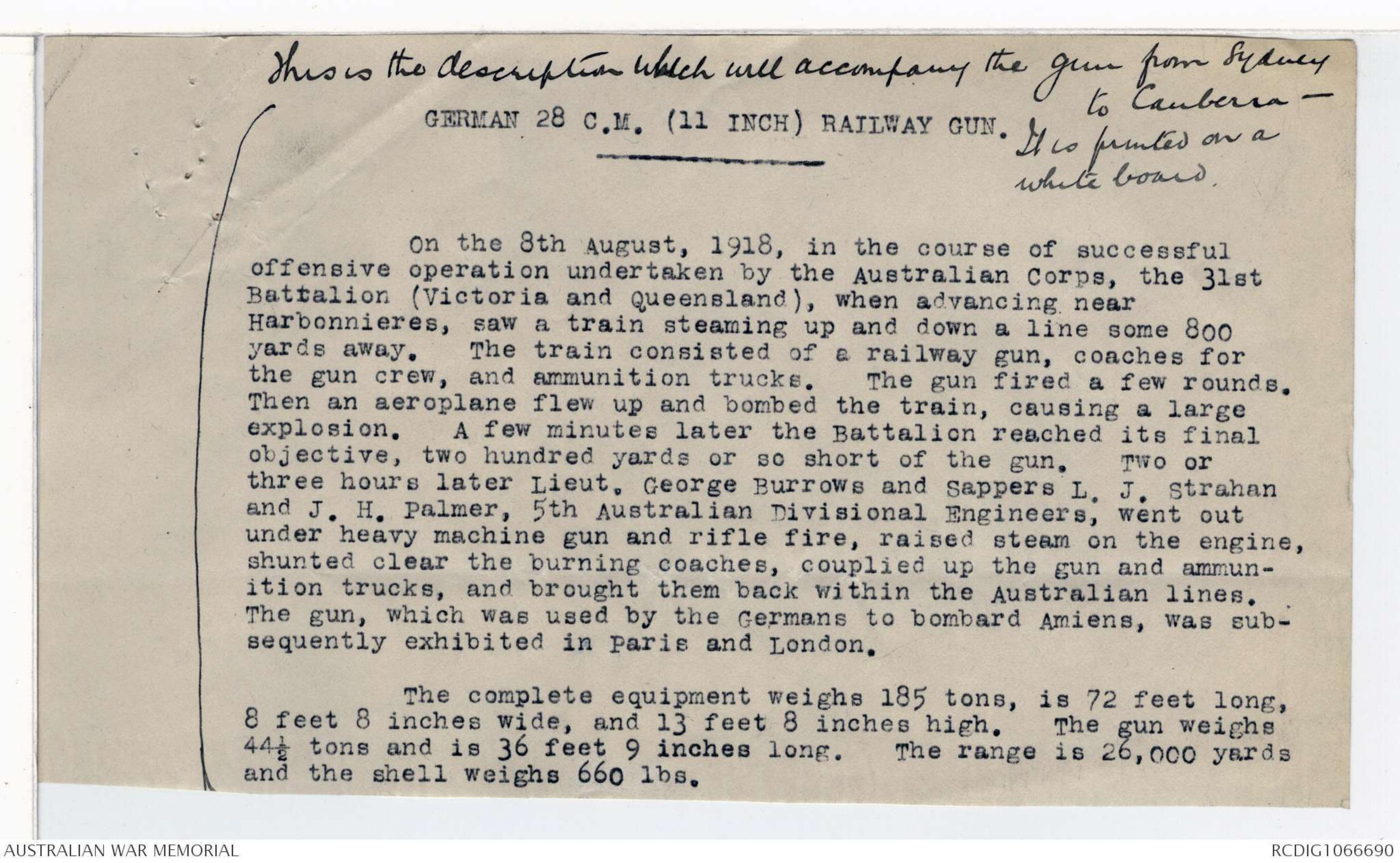

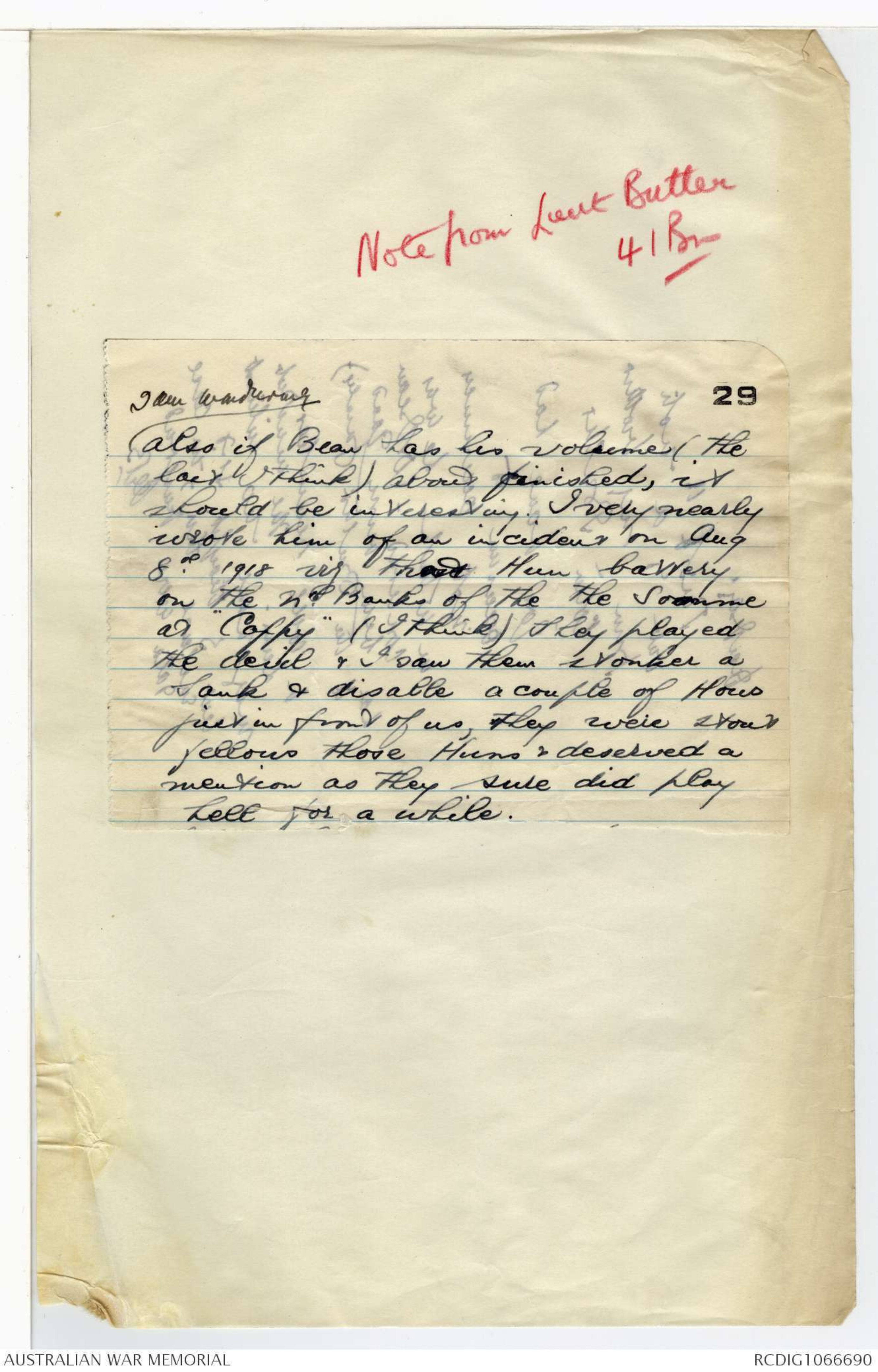
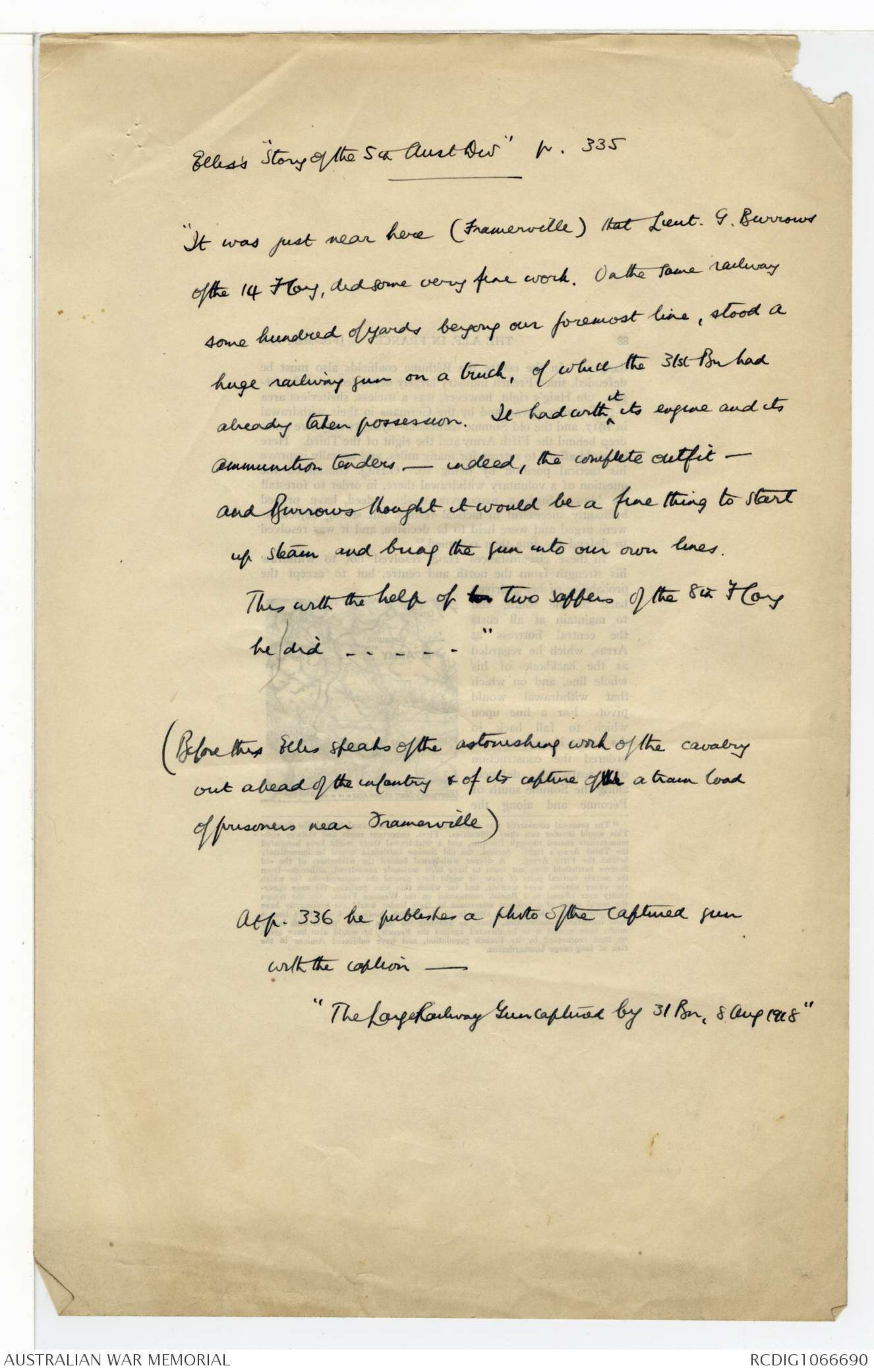

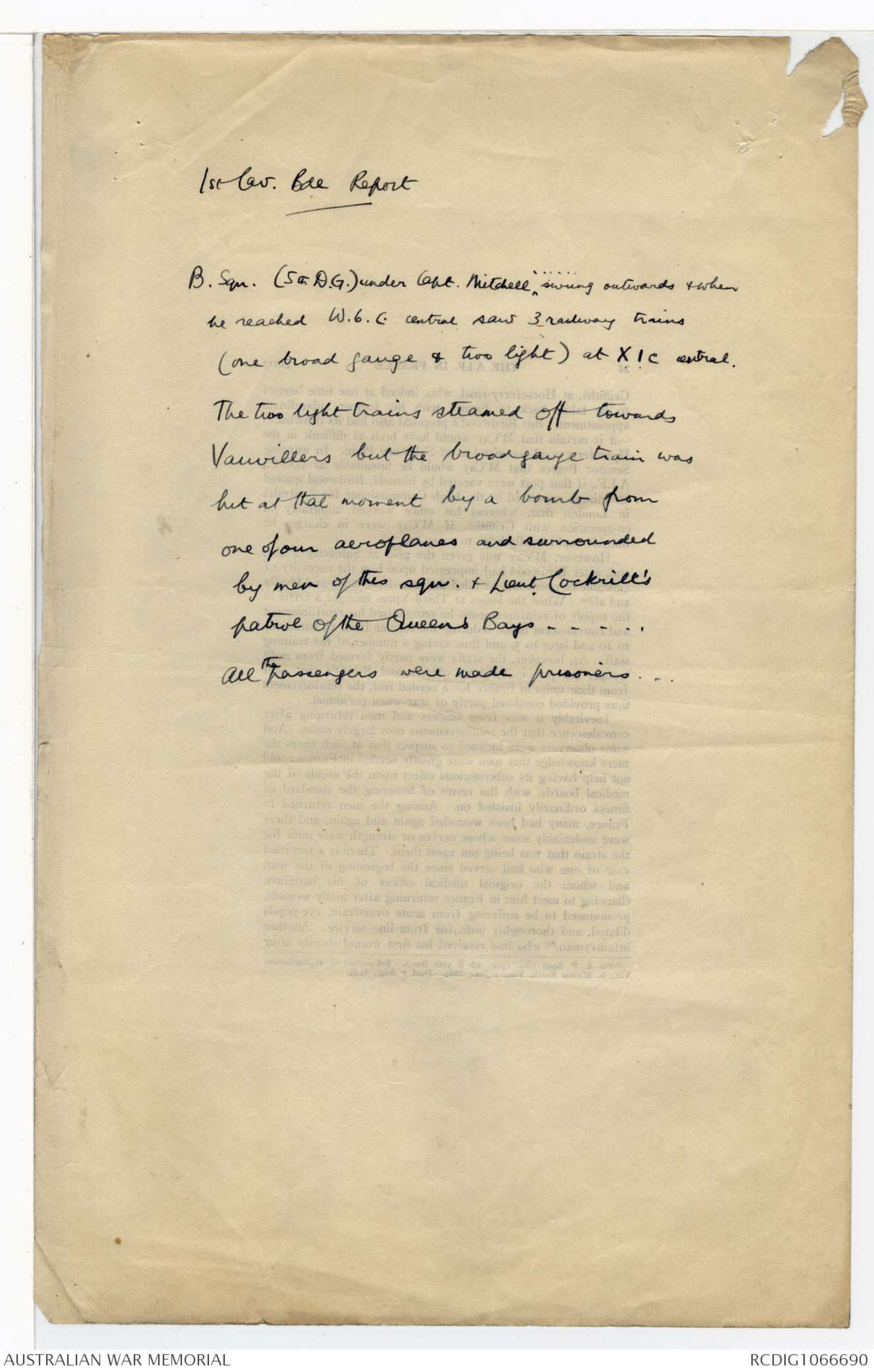
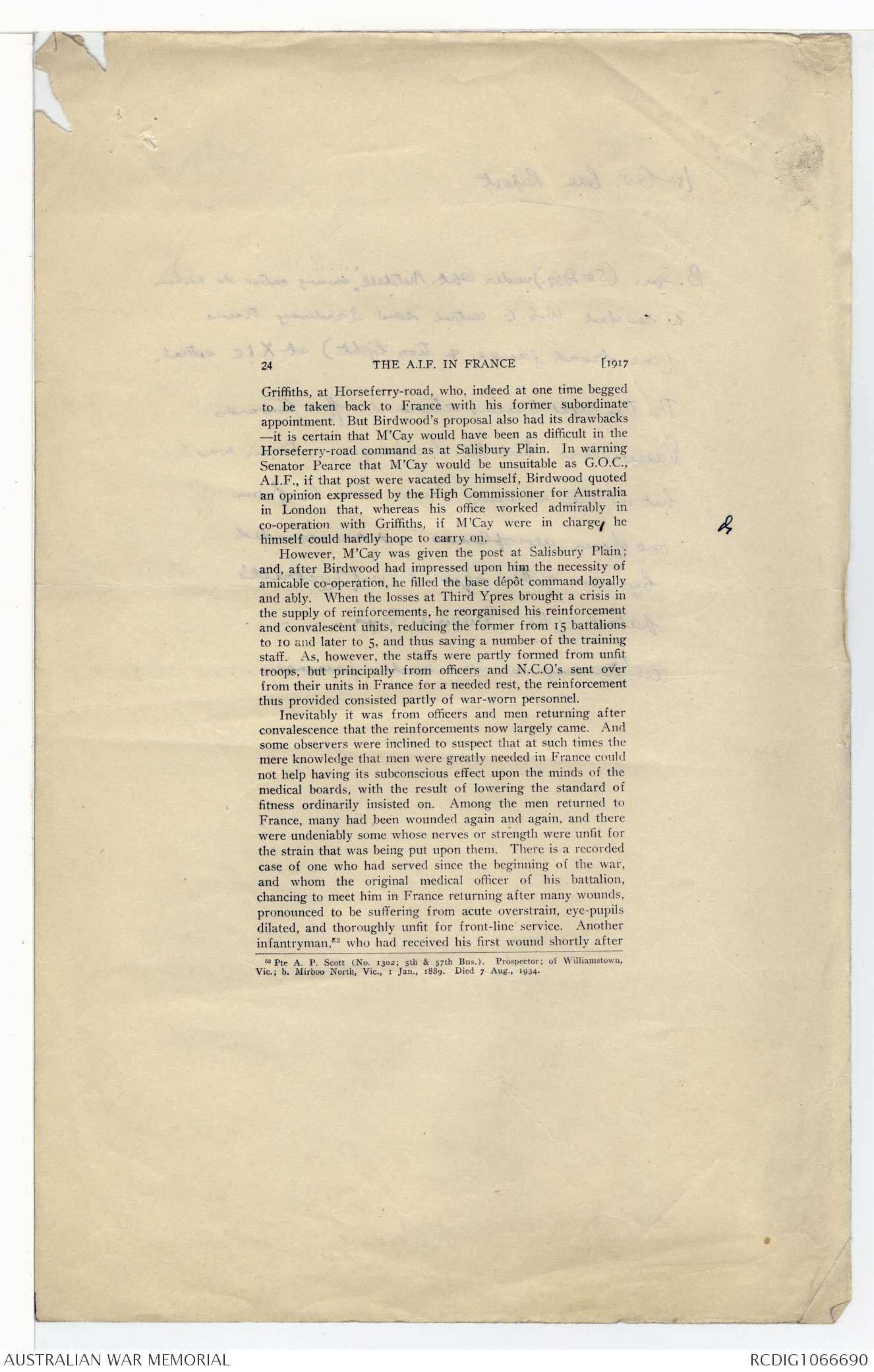
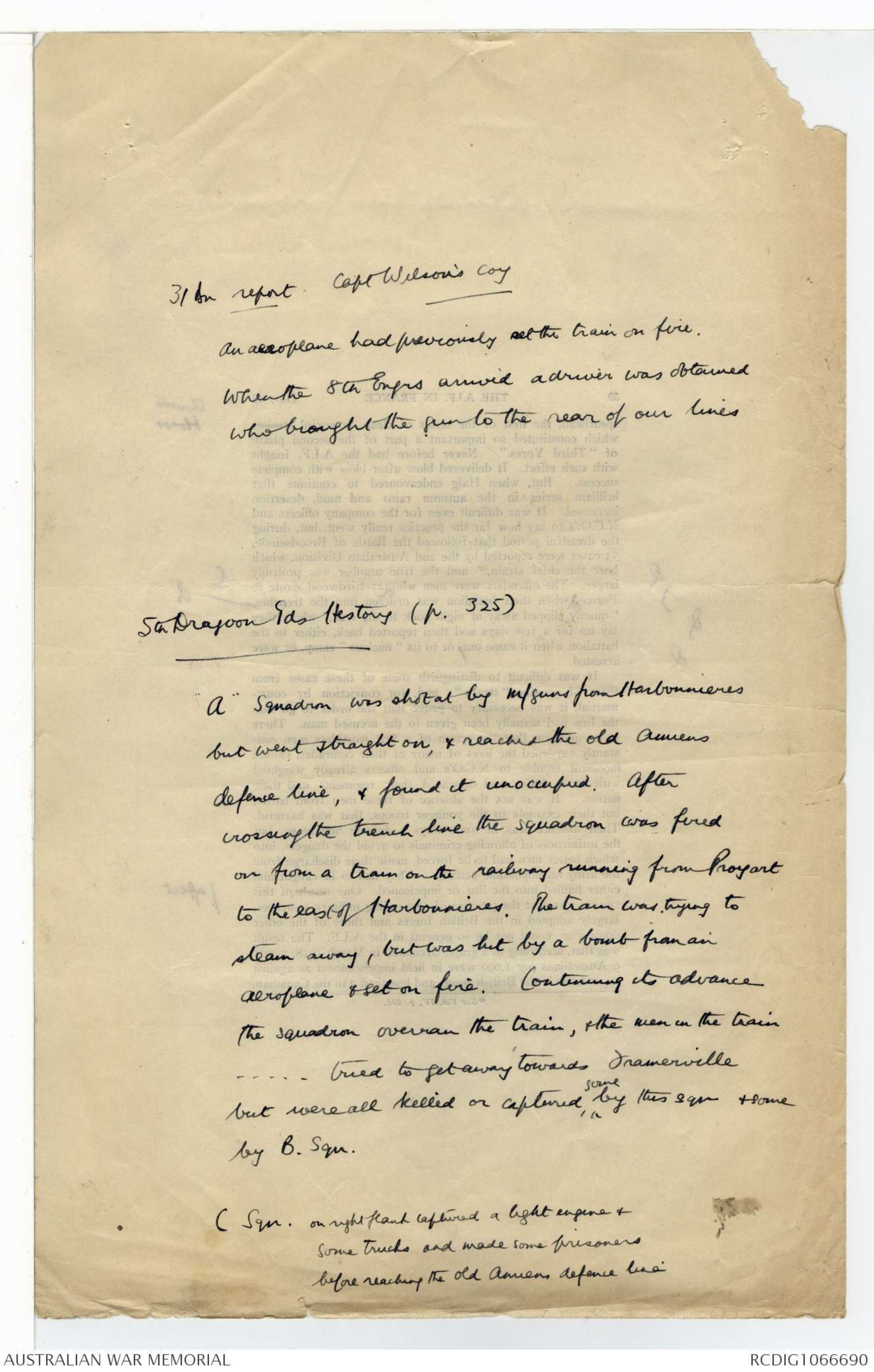
196
4
At that point began the long downward trend in the
numbers offering for active service, the causes and results
of which are the matter for later chapters so intimately bound up with the political
history of Australia during and after the war.
(In the meantime)
At the end of January 1916 the Prime Minister left Australia
on a visit to England. The German submarine menace led to an
amusing change of plans in his itinerary. Coming to Sydney to bid
farewell to his friends and supporters, he took a cordial leave of
a large party of admirers at the railway station and was supposed to
be on the eve of departure to join the outgoing mail-steamer at
Adelaide. But he went no further than Strathfield, a suburban
railway station, where he left the train, returned to Sydney, and
boarded the Canadian steamer in the harbour. The Censorship
prevented any further news of his journey from transpiring, until it
was heard that he had been sworn of the Canadian Privy Council.
The next stage was England, from which Australia heard abundantly
of his speeches, his movements, and his influence. Too much, indeed,
was heard for the equanimity of his party in Australia. It happened
that in Great Britain during his visit there was growing
dissatisfaction with the Asquith Government. It was felt that
“wait and see” was not a war motto, and that the slow and heavy
constitutional steps of old-time Liberalism were out of date when
opposed to the seven-league boots of German military autocracy.
Before the end of the year Asquith had resigned and Lloyd George
had succeeded. In the press and platform campaign of March-June
1916 W. M. Hughes found himself a personage of great importance in
British public life. Apart from the attention which, in view of
the military services of the Anzacs, the British people were now
only too ready to bestow upon the leader of the people of Australia,
they were disposed to listen with particular favour to a man who
told them of his unsparing endeavours to root out the German trade
penetration of Australia and to rouse his country to a policy of
1 Thur FAR. 19/278. Gun of 8 Bty capt on 18 Sept by Engl but [[?]]
(marked A Coy 3rd AIF)Height of sink.
Railway Gun. History of 52 I.R.
This is the description which will accompany the gun from Sydney
to Canberra -
It is printed on a
white board.
GERMAN 28 C.M. (11 INCH) RAILWAY GUN.
On the 8th August, 1918, in the course of successful
offensive operation undertaken by the Australian Corps, the 3lst
Battalion (Victoria and Queensland), when advancing, near
Harbonnieres, saw a train steaming up and down a line some 800
yards away. The train consisted of a railway gun, coaches for
the gun crew, and ammunition trucks. The gun fired a few rounds,
Then an aeroplane flew up and bombed the train, causing a large
explosion. A few minutes later the Battalion reached its final
objective, two hundred yards or so short of the gun. Two or
three hours later Lieut. George Burrows and Sappers L. J. Strahan
and J. H. Palmer, 5th Australian Divisional Engineers, went out
under heavy machine gun and rifle fire, raised steam on the engine,
shunted clear the burning coaches, couplied up the gun and ammunition
trucks, and brought them back within the Australian lines
The gun, which was used by the Germans to bombard Amiens, was subsequently
exhibited in Paris and London,
The complete equipment weighs 185 tons, is 72 feet long,
8 feet 8 inches wide, and 13 feet 8 inches high, The gun weighs
44½ ton and is 36 feet 9 inches long. The range is 26,000 yards
and the shell weighs 660 lbs.
May 28th 1923
Dear Treloar,
how about this for the inscription:
"This gun, emplaced on rails at Wiencourt near
Amiens, was one of those by which the Germans intended, during
the year 1918, to destroy the railway centre in that city and
thus partially separate the British and French in the hope of
driving one of them into early submission. The destruction of
the city was, however, prevented by the advance of the Allied
troops on the morning of August 8th, 1918, when five Australian,
four Canadian, and several British divisions broke the German
front before Amiens. This gun was captured early in the battle
by the combined efforts of British aeroplanes, British and Canadian
cavalry, and Australian infantry and engineers."
and on the other side or front):
"In memory of those of our own soldiers and of their
allies who saved the city of Amiens."
Yours sincerely,
CEW Bean
Note from Lieut Butler
41 Bn
29
I am wondering alas if Bean has his volume (the
last I think) about finished, it
should be interesting. I very nearly
wrote him of an incident on Aug
8th 1918 reg that Hun battery
on the Nth Banks of the the Somme
at “Coppy”(I think) They played
the devil & I saw them stonker a
tank & disable a couple of Hows
just in from of us, they were stout
fellows those Huns & deserved a
mention as they sure did play
hell for a while.
Ellis’s Story of the 5th Aust Div p. 335
“It was just near here (Framerville) that Lieut. G. Burrows
of the 14F Coy, did some very fine work. On the same railway
some hundred of yards beyond our foremost line, stood a
huge railway gun on a truck, of which the 3lst Bn had
already taken possession. It had with ^it its engine and its
ammunition tenders — indeed, the complete outfit —
and Burrows thought it would be a fine thing to start
up steam and bring the gun into our own lines,
This with the help of to two sappers of the 8th F Coy
he did - - - - - “
(Before this Ellis speaks of the astonishing work of the cavalry
out ahead of the infantry & of its capture of the a train load
of prisoners near Framerville)
At p. 336 he publishes a photo of the captured gun
with the caption _
“The Large Railway Gun captured by 31 Bn., 8 Aug 1918”
88 THE A.I.F. IN FRANCE (Feb.-Mar. 1918
danger. In the centre the Béthune coalfields also must be
defended, since French industry largely depended on their output.
On Haig's right, however, was a useless, shelterless area
—the country devastated by the Germans in their withdrawal
in 1917, and the old Somme battlefield—lying twenty-five miles
deep behind the Fifth Army and the right of the Third. Here
he could afford to retreat for many miles, and actually improve
his tactical position by doing so. G.H.Q. considered the
question of voluntary withdrawal there, in order to forestall
the blow. Such a manœuvre might, indeed, have proved
brilliantly successful in tactical results, but strong objections
were urged and were held to be decisive, and it was resolved
to defend the line then occupied.63
In these circumstances Haig resolved not to withdraw
his strength from the north and centre, but to accept the
probability of being driven
back in the south, and
to maintain at all costs
the central buttress at
Arras, which he regarded
as the backbone of his
whole line, and on which
that withdrawal would
pivot. For a line upon
which to fall back in
the south, if necessary, he
ordered the construction
of a rearward defences
along the Somme south of
Péronne and along the
63 The proposal considered was apparently one for withdrawal behind the Somme.
This would involve two chief difficulties. Fires, important roads and railway communications
passed through Péronne, and a withdrawal there might have hampered
the Third Army's right. Second, the old Somme battlefield would be immediately
behind the Fifth Army. A deeper withdrawal behind the wilderness of the old
Somme battlefield does not seem to have been seriously considered, although—from
the merely tactical point of view—it might have proved the masterstroke for which
the weary nations were waiting, and for which this was, perhaps, the only opportunity
ever offered to a British commander on the Western Front. On the troops
the moral effect of a brilliant manœuvre by their leader would not necessarily have
been depressing; the probable attitude of the French, however, would have been a
most important consideration, since, by avoiding the main thrust, the British leader
might have caused it to be directed against the French; he would also have given
up land reoccupied by its French population, and have subjected Amiens to the
risk of long-range bombardment.
Map - see original document
1st Cav Bde Report
B Sqn. (5th D.G.) under Capt Mitchell^........ swung outwards & when
he reached W.6.C central saw 3 railway trains
(one broad gauge & two light) at X.1.C central
The two light trains steamed off towards
Vauvilliers but the broad gauge train was
hit at that moment by a bomb from
one of our aeroplanes and surrounded
by men of this squ. & Lieut Cockrill's
patrol of the Queens Bays- - -
All the passengers were made prisoners.
24 THE A.I.F. IN FRANCE - [1917
Griffiths, at Horseferry-road, who, indeed at one time begged
to be taken back to France with his former subordinate
appointment. But Birdwood's proposal also had its drawbacks
—it is certain that M'Cay would have been as difficult in the
Horseferry-road command as at Salisbury Plain. In warning
Senator Pearce that M'Cay would be unsuitable as G.O.C.
A.I.F., if that post were vacated by himself, Birdwood quoted
an opinion expressed by the High Commissioner for Australia
in London that, whereas his office worked admirably in
co-operation with Griffiths, if M'Cay were in charge, he
himself could hardly hope to carry on.
However, M'Cay was given the post at Salisbury Plain;
and, after Birdwood had impressed upon him the necessity of
amicable co-operation, he filled the base dépot command loyally
and ably. When the losses at Third Ypres brought a crisis in
the supply of reinforcements, he reorganised his reinforcement
and convalescent units, reducing the former from 15 battalions
to 10 and later to 5, and thus saving a number of the training
staff. As, however, the staffs were partly formed from unfit
troops, but principally from officers and N.C.O's sent over
from their units in France for a needed rest, the reinforcement
thus provided consisted partly of war-worn personnel.
Inevitably it was from officers and men returning after
convalescence that the reinforcements now largely came. And
some observers were inclined to suspect that at such times the
mere knowledge that men were greatly needed in France could
not help having its subconscious effect upon the minds of the
medical boards, with the result of lowering the standard of
fitness ordinarily insisted on. Among the men returned to
France, many had been wounded again and again, and there
were undeniably some whose nerves or strength were unfit for
the strain that was being put upon them. There is a recorded
case of one who had served since the beginning of the war,
and whom the original medical officer of his battalion,
chancing to meet him in France returning after many wounds,
pronounced to be suffering from acute overstrain, eye-pupils
dilated, and thoroughly unfit for front-line service. Another
infantryman,53 who had received his first wound shorty after
53 Pte A. P. Scott (No. 1302; 5th & 57th Bns.) Prospector; of Williamstown,
Vic.; b. Mirboo North Vic., 1 Jan., 1889. Died 7 Aug., 1934.
31Bn report. Capt Wilson's coy
An aeroplane had previously set the train on fire,
When the 8th Engrs arrived a driver was obtained
who brought the gun to the rear of our lines
5th Dragoon Gds History (p.325)
A Squadron was shot at by m/guns from Harbonnieres
but went straight on, & reached the old Amiens
defence line, & found it unoccupied. After
crossing the trench line the squadron was fired
on from a train on the railway running from Proyart
to the east of Harbonnieres. The train was trying to
steam away, but was hit by a bomb from an
aeroplane & set on fire. Continuing its advance
the squadron overran the train, & the men in the train
- tried to get away towards Framerville
but were all killed or captured ^some by this sqn & some
by B. Squ.
C Squ. on right flank captured a light engine &
some trucks and made some prisoners
before reaching the old Amiens defence line
 Sam scott
Sam scottThis transcription item is now locked to you for editing. To release the lock either Save your changes or Cancel.
This lock will be automatically released after 60 minutes of inactivity.